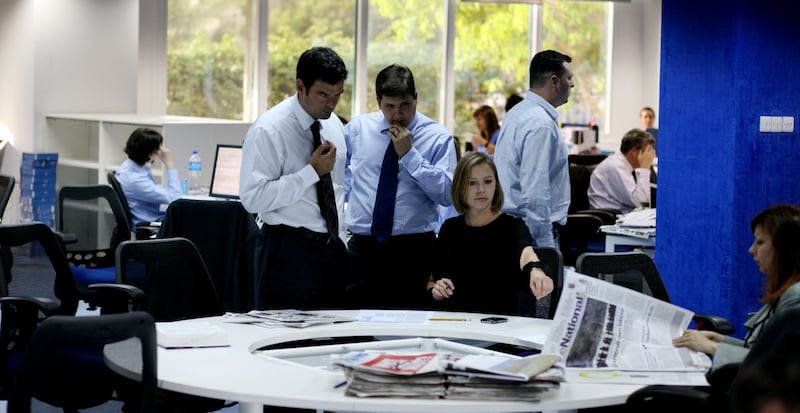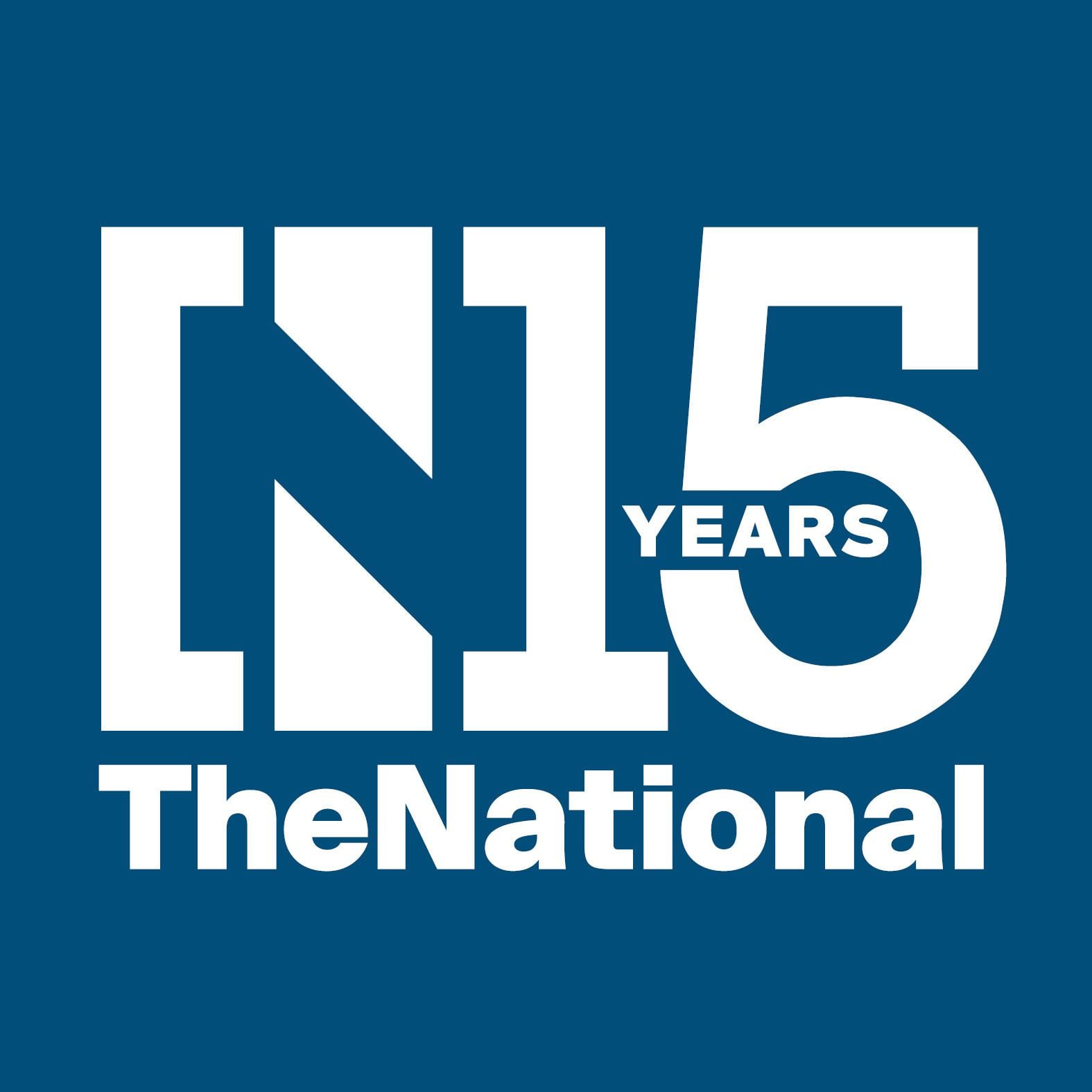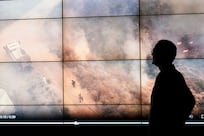On April 16, 2008, I hit the button to start the printing press for the inaugural edition of The National newspaper.
Two hundred days before, I had landed in Abu Dhabi in 50°C heat to find deserted streets in the middle of a Ramadan afternoon. I checked into my hotel and burst into tears – I had made a terrible mistake. But here I am, 15 years later, still in my role as managing editor of this ever-growing news organisation with ample war stories and comic relief – especially from those founding days.
A few weeks before, I found myself in a puddle of pity. I had been working away at the National Post newspaper in Toronto, another title I helped launch in 1998. Martin Newland was an editor on that paper and when he called to recruit me for the Abu Dhabi start-up I was an easy sell: “There’s no snow and no taxes.”
It is fair to say none of us realised what we were getting ourselves into or how unusually ambitious this project would be. But we all understood the mission: to create a quality, broadsheet newspaper that would bring the capital and the country credibility and signal that it was an up-and-coming place to visit and do business. That was the easy bit.
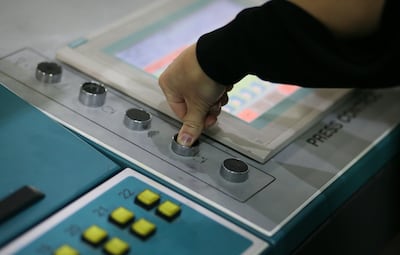
We soon realised we had no newsroom, no computers, no computer system and no place to house the 200-plus people we had begun to hire and who were arriving on our doorstep every day.
We ordered computers. We did a 48-hour trip to Copenhagen to settle on a computer editorial system.
Then we found out we didn’t have a printing press.
Buying and building a printing press is normally a multi-year proposition, and outsourcing the printing was not a viable option. We were in a real pickle. This was when the head of the printing division, Ali Alnuaimi, earned his wings. He somehow found a printing press that had been ordered by a Russian newspaper. It was on a boat making its way to its final destination. Ali convinced that company to transfer ownership of the press to us and had the boat redirected to Abu Dhabi.
Printing presses, however, are sold in a million pieces. So when it arrived it had to be assembled – a process that would normally take no less than a year. A giant concrete slab was poured, and a small army of people set out working around the clock to build us a press. As the behemoth machine was assembled, the walls and roof of the building went up around it.
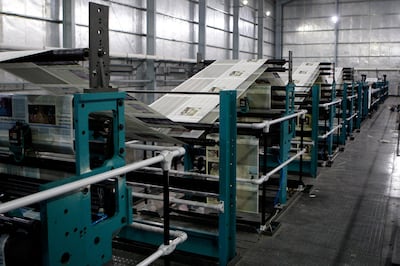
Fifteen years ago, Yas Island, Saadiyat, Reem, Al Zeina and Al Bandar had yet to be built. There were only a few hotels and barely any vacancies in the city’s apartment buildings. Because the demand could not be met, rents were extraordinary – especially given the quality of the accommodation.
Our company covered our first month in a hotel; after that we were paying extortionate rates to stay in aged hotel apartments. Enter Lizzie Eschauzier, a long-time resident of Abu Dhabi with a strong institutional knowledge of how to make things work. She was tasked with helping newcomers navigate the bureaucracy. The solution to our housing woes was to rent entire apartment buildings before they were even built. Staff then signed up to rent rooms in these apartments. It took several years before Abu Dhabi’s infrastructure caught up with the demand, these leases finally ran out, and I was able to turn in the keys and stop playing property manager.
Meanwhile, we conceived, designed and hired a team of journalists from more than 20 countries to create a newspaper we were proud of. But it still needed the ultimate stamp of approval.
We were told Martin would be summoned at any moment so he could show Sheikh Mohamed bin Zayed, Crown Prince of Abu Dhabi at the time, the prototype and hopefully get the green light to proceed. Martin put on his best suit and shiniest shoes and carried the prototype under his arm for three days waiting anxiously for The Call.
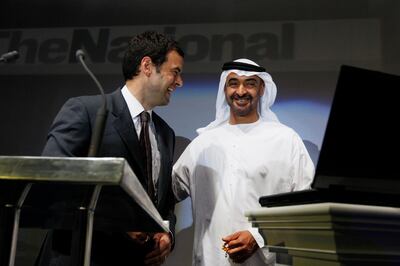
Finally, it came with instructions to meet Sheikh Mohamed, now President of the UAE, at Marina Mall. There, in a cafe, Martin received the praise we had hoped for.
Soon after, we moved out of the dingy auditorium we had hunkered down in and into our sparkling new offices to begin “dry runs”. This is an exercise to produce the full newspaper every day to deadline until all the kinks are worked out. During this time we cut our teeth covering one of the biggest UAE news events of the day: a 200-car pile-up on Sheikh Zayed Road caused by thick fog. We did it well, and we knew we were ready to roll.
On Thursday, April 17, 2008, we proudly held the first edition of The National. On Friday morning, the second edition went out just fine.
On Saturday morning, Martin received a call from the Crown Prince’s office concerned that they had not received that day’s edition. It was explained that we had been commissioned to do only six days a week.
New instructions came down: we need a Saturday paper. It needs to be bigger and better than all the other days and it should have a magazine too.
Fifteen years later, the challenges keep on coming – and I wouldn’t have it any other way.
